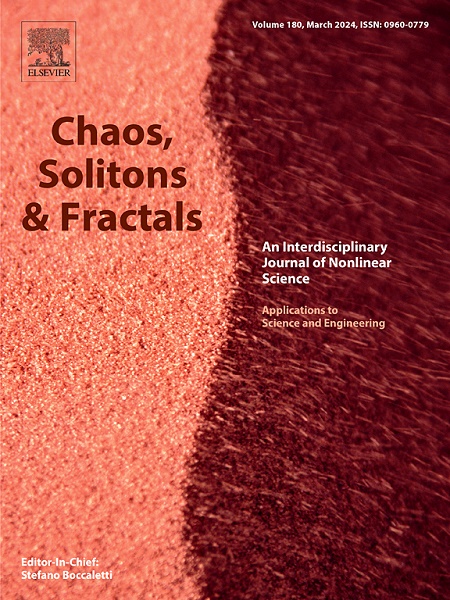Decoding driving states based on normalized mutual information features and hyperparameter self-optimized Gaussian kernel-based radial basis function extreme learning machine
IF 5.3
1区 数学
Q1 MATHEMATICS, INTERDISCIPLINARY APPLICATIONS
引用次数: 0
Abstract
This study presents an analysis of driver's unfavorable driving states (UDS) using normalized mutual information (NMI) features and a hyperparameter self-optimized radial basis function extreme learning machine (RBF-ELM). By computing the mutual information across different frequency bands (including delta, theta, alpha, beta, and gamma frequency bands) in EEG signals, brain functional connectivity matrices are constructed to reveal the nonlinear coupling relationships between brain regions. The introduction of NMI reduces the effects of signal dimensionality differences, which ensures the comparability of features across subjects. After preprocessing and band-pass filtering of EEG signals, NMI features from five frequency bands are extracted, and RBF-ELM is then employed for distinguishing UDS. In the RBF-ELM model, an automatic hyperparameter optimization approach is implemented, combining grid search and five-fold cross-validation to select the optimal number of hidden layer neurons and regularization parameters. The experimental results show that the NMI features from the beta band provide excellent classification performance, achieving an accuracy of 94.06 % in detecting UDS. Moreover, the hyperparameter self-optimized RBF-ELM model exhibits outstanding performance on the test set, with an area under the receiver operating characteristic (ROC) curve (AUC) value of 0.9915. Compared to classic machine learning algorithms, the proposed method outperforms support vector machine, ensemble learning, linear discriminant analysis, logistic regression, neural networks, and k-nearest neighbors in terms of accuracy, sensitivity, precision, and specificity. The method presented in this paper provides a promising solution for real-time monitoring of drivers' psychological states and fatigue warning.
基于归一化互信息特征和超参数自优化高斯核的径向基函数极限学习机的驱动状态解码
利用归一化互信息(NMI)特征和超参数自优化径向基函数极限学习机(RBF-ELM)对驾驶员不利驾驶状态(UDS)进行了分析。通过计算脑电信号中不同频段(包括delta、theta、alpha、beta和gamma频段)的互信息,构建脑功能连接矩阵,揭示脑区之间的非线性耦合关系。NMI的引入减少了信号维度差异的影响,从而确保了受试者之间特征的可比性。对脑电信号进行预处理和带通滤波后,提取5个频段的NMI特征,然后利用RBF-ELM进行UDS识别。在RBF-ELM模型中,实现了一种自动超参数优化方法,结合网格搜索和五重交叉验证来选择最优的隐藏层神经元数量和正则化参数。实验结果表明,来自beta波段的NMI特征提供了良好的分类性能,对UDS的检测准确率达到94.06%。此外,超参数自优化RBF-ELM模型在测试集上表现出出色的性能,其接收者工作特征(ROC)曲线下面积(AUC)值为0.9915。与经典的机器学习算法相比,该方法在准确性、灵敏度、精密度和特异性方面优于支持向量机、集成学习、线性判别分析、逻辑回归、神经网络和k近邻。该方法为驾驶员心理状态实时监测和疲劳预警提供了一种很有前景的解决方案。
本文章由计算机程序翻译,如有差异,请以英文原文为准。
求助全文
约1分钟内获得全文
求助全文
来源期刊

Chaos Solitons & Fractals
物理-数学跨学科应用
CiteScore
13.20
自引率
10.30%
发文量
1087
审稿时长
9 months
期刊介绍:
Chaos, Solitons & Fractals strives to establish itself as a premier journal in the interdisciplinary realm of Nonlinear Science, Non-equilibrium, and Complex Phenomena. It welcomes submissions covering a broad spectrum of topics within this field, including dynamics, non-equilibrium processes in physics, chemistry, and geophysics, complex matter and networks, mathematical models, computational biology, applications to quantum and mesoscopic phenomena, fluctuations and random processes, self-organization, and social phenomena.
 求助内容:
求助内容: 应助结果提醒方式:
应助结果提醒方式:


